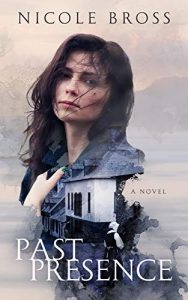Hacking Your Creative Flow: How Tracking Your Word Count Can Make You a Better Writer
 By Nicole Bross
By Nicole Bross
As a writer, there’s an easy way to increase your productivity that you may not have considered: tracking your daily word counts. Whether you’re a freewheeling pantser who lets your story develop as you write or a hard-and-fast outliner who plans every chapter and scene before you write a word, taking a few moments to chart your word count progress has numerous benefits.
First of all, what sorts of things can we track?
- Daily total number of words written
- Time spent writing (this, along with the above point, will give you your hourly average)
- Where and what time of day you write
- Words per chapter
The big question is, why go to the extra work? Simply put, because every writer has goals, and tracking can help you meet them. Whether it’s to finish a book by a deadline, write a certain number of words over a specified time (NaNoWriMo is a great example of this: 50,000 words in 30 days), build a daily writing habit or just learn more about yourself as a writer, tracking will help you get there. Here’s how:
- Knowing your average number of words written per hour, day, week or month can help you better plan the amount of time you need to complete your draft. For example, if you want to finish a 90,000-word novel in three months, you know you’ll need to write roughly 1,000 words per day. Learning what your average words per hour is will tell you how much time to set aside each day to write.
- Tracking your total progress ensures you’re on target to meet your goals. Taking our example above, if it’s the 20th of the month but you’ve only written 12,000 words, you know you’ve either got some catching up to do, or you need to readjust your deadline.
- For outliners, tracking your word count can show you whether you need to expand or edit your plot to ensure you’re in line with your end goal. If you’re aiming for a 90,000-word draft, have written 45 of your 50 outlined scenes and are only at 50,000 words, you’ll know you’re in need of a subplot to bump up your word count.
- Noting where and when you’re writing can help you find the optimal time and place to do your work. Are you most productive getting up an hour early to write, or staying up an hour later? Does the background noise of a busy cafe inspire your best creative moments, or is the solitude of a quiet table in the library best for your muse? By measuring your average words per hour in several different scenarios and settings, you can discover the best location and time of day for your writing.
- Keeping a log of your chapters’ word counts is can show you if they’re consistent with one another and the flow of your story. If your chapters are typically in the 3,000-word range but one comes in at 8,000 words, you might want to consider breaking it up into two or looking for places to make edits.
- If your goal is to build a daily writing habit, tracking is a way of both logging your progress and providing satisfaction by marking off another day completed. It can feel very rewarding to see a long row of gold stars representing a streak of days you wrote!
I hope by this point I’ve convinced you that tracking will be beneficial to your writing. If that’s the case, you’re probably wondering how you can go about doing this, and I have some recommendations. There are several apps created specifically for writers that do a great job of logging your word counts. For iOS, I like WordOne Lite or Wordly.
WordOne Lite tracks your total word count, words per day and your daily average, and has a progress meter that changes colours from red to green as your approach your target. Wordly does the above plus tracks writing time to give you your hourly average, and can be set to give you reminders to write every day. For Android, Writer Tools is a great option. It has similar features to Wordly with the addition of a notes section where you can build character profiles, organize settings and even outline scenes and chapters.
Spreadsheets are another great way to track your writing progress, because they’re so versatile. Whatever you want to track, you can build it into a spreadsheet. They do take a bit more work to set up, but the flexibility and customization they allow make them well worthwhile. Spreadsheets don’t have to be pretty, as long as they work! Here are a few blank templates I’ve created in Google Sheets that you’re welcome to copy and use, if you don’t want to create your own:
- This spreadsheet will track your daily word count and total word count, as well as words per month and chapter. It also has a column for your notes.
- This spreadsheet is best for people who want to create a daily writing habit, as well as track their daily totals and averages. It’s also set up to tell you whether you met a daily minimum words goal.
- BONUS! This spreadsheet is for editing your drafts and will track how many words you cut or add to each chapter, to make sure you’re sticking to your goals.
Tracking and the information you will learn from it is most helpful if you’re consistent about logging the data you want to track. That said, doing it imperfectly is better than not doing it at all. The best time to chart your numbers and notes is after you’ve finished writing for the day. If that’s not possible (like if you’re racing to finish a scene before running out the door) it’s just as easy to do it at the beginning of the next session, before you start writing anything new.
Tracking really can make you a more productive and efficient writer, whether that’s being more consistent, more prolific or helping you meet your goals. I hope if you’re not already tracking some measure of your writing, this has encouraged you to try.
—
Nicole Bross is an author from Calgary, Alberta, Canada, where she lives with her husband, two children and one very large orange cat. When she’s not writing or working as the editor-in-chief of Birthing Magazine, she can be found curled up with a book, messing around with her ever-expanding collection of manual typewriters or in the departures lounge of the airport at the beginning of another adventure. Past Presence is her debut novel.
 Only by looking into the past can Audrey save her future.
Only by looking into the past can Audrey save her future.Audrey Eames is happy living the wanderer’s life. After a near-death experience in her teens, Audrey can see people’s past lives whenever her skin touches theirs, and afraid of being labeled delusional, she’s never stayed in one place too long or made any deep connections.
So, when Audrey’s estranged aunt dies and leaves her the historic Soberly Inn and Public House on the scenic Oregon coast, Audrey wants nothing to do with it. She is determined to sell the inn and leave town before someone discovers the power she’s been hiding from the world, but clauses in her aunt’s will seem to block her at every turn.
Yet once ensconced in Soberly’s small town life, the people–particularly the bartender, Kellen Greene–start to grow on her, and she begins to feel that maybe she’s finally found a place of her own. As accepting as the townspeople seem, Audrey fears their reactions–and Kellen’s rejection–and decides to keep her visions a secret. But all is not well in Soberly. Soon after Audrey arrives, people in town start dying in the same manner as in their past lives–but in this lifetime it’s murder. When suspicion starts to fall on Audrey and her new beau Kellen, Audrey vows to use her gift to find the murderer and protect the people she loves–before it’s too late.
Category: Contemporary Women Writers, How To and Tips























